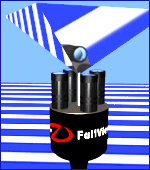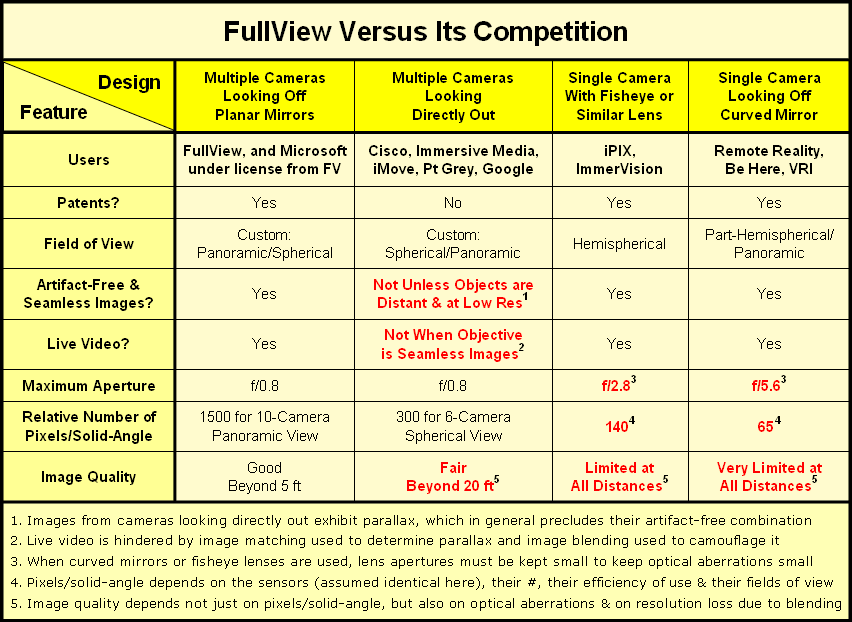|
FullView has numerous patents worldwide
that it strives to enforce vigorously.

 FullView's patents in the U.S. include the following:
FullView's patents in the U.S. include the following:
-
Panoramic Viewing System with a Composite Field of View
Patent No. 6,700,711,
Priority Nov 30, 1995,
Issued Mar 2, 2004.
-
Panoramic Viewing System With Shades
Patent No. 6,356,397,
Priority Nov 30, 1995,
Issued Mar 12, 2002.
-
Icon Referenced Panoramic Image Display
Patent No. 6,285,365,
Filed Aug 28, 1998,
Issued Sep 4, 2001.
-
Panoramic Viewing System With Offset Virtual Optical Centers
Patent No. 6,219,090,
Priority Nov 30, 1995,
Issued Apr 17, 2001.
-
Compact High Resolution Panoramic Viewing System
Patent No. 6,195,204,
Filed Aug 28, 1998,
Issued Feb 27, 2001.
-
Split Mirrored Panoramic Image Display
Patent No. 6,144,501,
Filed Aug 28, 1998,
Issued Nov 7, 2000.
-
Stereo Panoramic Viewing System
Patent No. 6,141,145,
Filed Aug 28, 1998,
Issued Oct 31, 2000.
-
Panoramic Viewing System With Support Stand
Patent No. 6,128,143,
Filed Aug 28, 1998,
Issued Oct 3, 2000.
-
Spherical Viewing/Projection Apparatus
Patent No. 6,115,176,
Filed Nov 30, 1995,
Issued Sep 5, 2000.
-
Panoramic Viewing System With Offset Virtual Optical Centers
Patent No. 6,111,702,
Priority Nov 30, 1995,
Issued Aug 29, 2000.
-
Method And System For Panoramic Viewing
Patent No. 5,990,934,
Filed Apr 28, 1995,
Issued Nov 23, 1999.
-
High Resolution Viewing System
Patent No. 5,793,527,
Filed Jun 30, 1995,
Issued Aug 11, 1998.
-
Panoramic Viewing Apparatus
Patent No. 5,745,305,
Filed Apr 28, 1995,
Issued Apr 28, 1998.
-
Panoramic Projection Apparatus
Patent No. 5,539,483,
Filed Jun 30, 1995,
Issued Jul 23, 1996.
|
|

|











